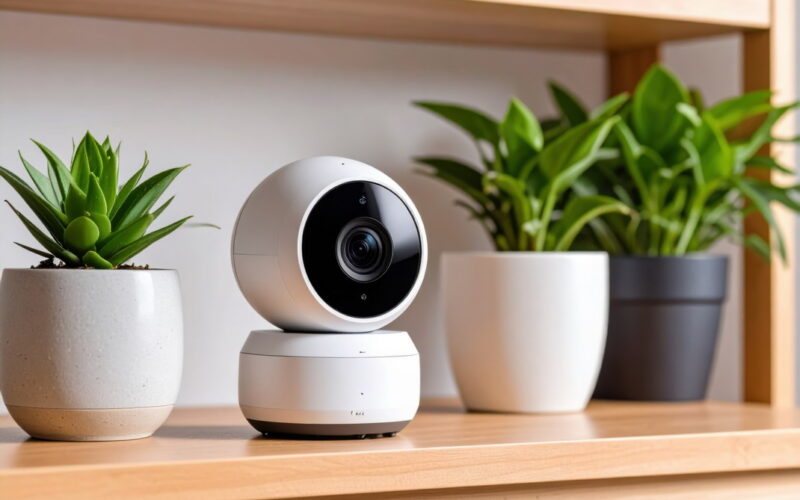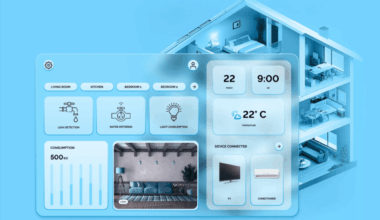It has been said that a home security camera is only as effective as the view it offers. I will not argue that point one bit. It does little to no good to put money into the best camera on the market only to install it in such a way as to limit what it can show you.
I suppose one of the benefits of going with a professionally installed home security system is knowing that all your cameras have been placed correctly. Consider Vivint, one of the nation’s leading home security providers. Their ‘white glove’ installation comes with every package. Vivint techs know just where to locate cameras and how to set up their views for the most effective coverage.
If you are a DIY enthusiast intent on installing your own security system, great. Here are seven tips for locating your cameras like a pro. Remember that placement matters.
Tip #1: Avoid Obstructions
The first tip seems kind of obvious except for one thing: while homeowners are very good at identifying current obstructions, they don’t do such a good job with anticipating future obstructions. The tree is a classic example.
You might place a camera in late fall, having just decided that your house needs to be protected during the holidays. What you fail to realize is that the big oak tree in the front yard will come to life in the spring with fuller boughs covered with leaves. The view you can see today might be obstructed in six months.
Trees, shrubs, plants, etc. all change with the seasons. But there is more. Weather can make a difference as well. A camera mounted under an eave may provide an adequate view during three seasons. But during the winter, icicles hanging from the gutters can render the camera useless.
Tip #2: Keep the View Narrow
Next up, keep the view each camera provides as narrow as possible. You do not need to surveil the entire neighborhood. And the wider the view, the more likely your cameras will pick up motion you don’t care about. That leads to recording data that only wastes valuable storage space and wears down the batteries.
Modern video cameras can come with impressive coverage angles. There is the temptation to make the view as wide as possible just because a camera is capable of it. But before you do that, consider the impacts of too much coverage. You are better off keeping the view as narrow as possible to suit the purposes of that particular camera.
Tip #3: Avoid Heat Sources
Avoid placing exterior cameras near heat sources. Dryer vents immediately come to mind. Also avoid your HVAC venting system and any other sources of heat. Exterior cameras can usually withstand moderate sunlight without a problem. But additional heat from a vent could be problematic.
If you can avoid direct sunlight, that is a bonus. Placing a camera under the shade of a tree can extend its life by protecting it against direct sunlight and UV rays.
Tip #4: Visible but Out of Reach
Place your cameras in locations where they are clearly visible but still out of reach. This applies to both interior and exterior cameras. The big question is why?
Video cameras can be a deterrent to property crimes. But they only deter if criminals can see them. You want criminals to know that they are being watched and recorded. Yet you still want to keep your cameras out of reach so that they cannot be disabled easily.
Here is a classic example: installing a camera pointing at the front door. It’s mounted just outside a second-floor window so an approaching criminal can easily see it. Yet it cannot be disabled from the ground.
Tip #5: Avoid Views of the Windows
Indoors, place video cameras in such a way as not to provide direct views of the windows. This might sound counterproductive, but it’s actually not. Too much light coming in the window can render a video camera useless. The rest of the view can be obscured because there is too much light. If some view of a window is unavoidable, do your best to ensure that view is not direct.
Also, forget about purchasing a cheap interior camera and setting it up next to a window to give you a view of the outside. It’s not going to work. Glare from the window will almost certainly reduce the quality of the image. If you can see anything at all, it won’t be the kind of detail you could get from an exterior camera.
Tip #6: Avoid the Sky in Any of Your Views
Just as with windows, allowing any part of the sky within the view of your camera can distort the image because of excess light. You are better off mounting cameras higher so that they can be pointed downward at the target area. Cameras pointed upward will be less effective, especially on very sunny days.
Tip #7: Respect Individual Privacy
This final tip has both practical and legal implications: respect individual privacy. From the legal perspective, most states ban the practices of installing cameras in any areas where a reasonable expectation of privacy exists. So if you ever have guests in your home, it is illegal to install security cameras in your bathrooms. Even in your home, a bathroom is a place where guests expect a measure of privacy.
Landlords are held to an even higher standard. Some states do not allow interior security cameras of any kind in rentals. Others allow interior cameras only in kitchens and living spaces. Bedrooms and bathrooms are off limits.
Even where there are no legal restrictions, it’s still important to respect the privacy of others. There is no need to point exterior cameras at your neighbors’ homes, for example.
Where security cameras are placed makes a difference. The pros know how to do it. If you’re thinking of installing cameras yourself, pay attention to these tips and others you find online.








